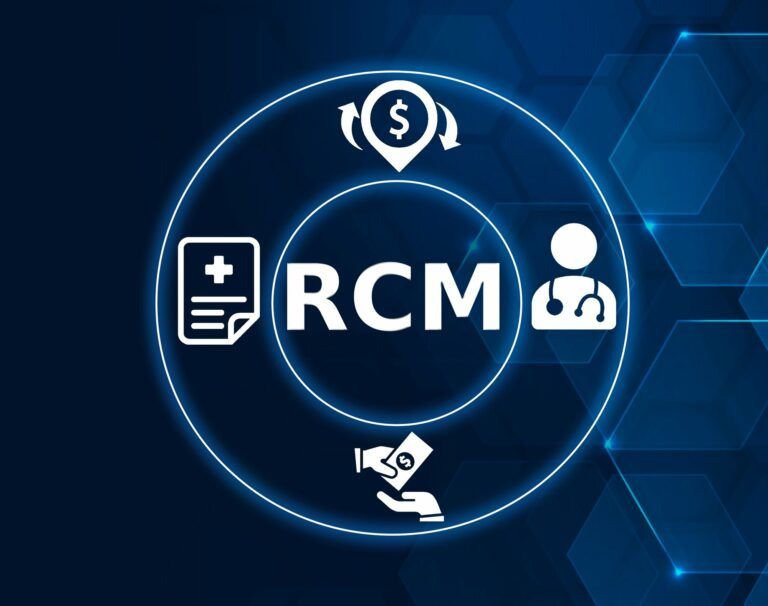Effective revenue cycle management is crucial for the financial health of healthcare institutions. It ensures a smooth revenue flow from patient to provider, addressing inefficiencies that could negatively impact both parties. With the incorporation of technology, adherence to compliance, and a focus on patient-centered strategies, healthcare providers can achieve financial stability while improving the patient financial experience.
Uncovering Key Data Trends
Data trends play a pivotal role in shaping the financial landscape. By analyzing these trends, organizations can gain valuable insights that drive efficiency and financial optimization. Here are key points to consider:

- Predictive Analytics: Leveraging predictive analytics allows healthcare providers to forecast revenue patterns, identify potential bottlenecks, and proactively address financial challenges.
- Utilization of Big Data: The utilization of big data enables organizations to uncover patterns and trends that can inform strategic decision-making, leading to improved revenue cycle management.
- Data-Driven Insights: Data-driven insights provide a comprehensive understanding of patient payment behaviors, enabling tailored approaches to revenue cycle management.
Impact of Data-Driven Insights
The impact of data-driven insights on revenue cycle optimization cannot be overstated. By harnessing the power of data, healthcare organizations can streamline processes, enhance financial performance, and ultimately improve the patient financial experience. Through the integration of advanced analytics and data-driven strategies, providers can navigate the complexities of revenue cycle management with precision and foresight.
The Role of AI and Automation
AI and automation have emerged as transformative forces, revolutionizing the efficiency and accuracy of financial processes. Here's a closer look at their impact:
- Automated Billing Systems: Automated billing systems streamline the invoicing and payment processes, reducing manual errors and accelerating revenue collection.
- AI-Powered Predictive Analytics: AI-powered predictive analytics enable healthcare organizations to forecast revenue trends, identify potential payment delays, and optimize financial workflows.
- Enhanced Efficiency: The integration of AI and automation enhances the overall efficiency of revenue cycle management, allowing providers to allocate resources strategically and minimize operational costs.
Digital Innovations for Patient Financial Experiences
Digital innovations play a crucial role in enhancing the patient financial experience within revenue cycle management. By leveraging technology, healthcare organizations can offer seamless and transparent financial interactions, fostering trust and satisfaction among patients. Key aspects include:
- Mobile Payment Solutions: Mobile payment solutions provide patients with convenient and secure methods to settle their healthcare bills, improving accessibility and expediting the payment process.
- Personalized Financial Portals: Personalized financial portals empower patients to access and manage their billing information, promoting transparency and empowering informed decision-making.
- Enhanced Communication Channels: Digital innovations facilitate improved communication channels, allowing for proactive financial counseling and support, ultimately enhancing the overall patient experience.
Regulatory Complexities
Navigating compliance challenges within the healthcare revenue cycle demands a comprehensive understanding of regulatory complexities. Here's a closer look at the intricacies and strategies for addressing them:
- HIPAA Compliance: Ensuring compliance with the Health Insurance Portability and Accountability Act (HIPAA) is essential for safeguarding patient data and maintaining trust.
- Billing and Coding Regulations: Adhering to accurate billing and coding regulations is crucial for preventing compliance issues and mitigating the risk of audits or penalties.
- Transparent Financial Practices: Transparency in financial practices not only fosters patient trust but also aligns with regulatory requirements, promoting ethical revenue cycle management.
Strategies for Compliance
To navigate compliance challenges effectively, healthcare organizations can implement the following strategies:

- Regular Staff Training: Continuous education and training programs for staff members ensure that they are well-versed in compliance requirements and best practices.
- Robust Auditing Processes: Implementing robust auditing processes allows organizations to identify and rectify potential compliance gaps, ensuring adherence to regulations.
- Partnerships with Compliance Experts: Collaborating with compliance experts and consultants provides valuable insights and guidance in navigating complex regulatory space.
Patient-Centric Approaches
In revenue cycle management, embracing patient-centric approaches is paramount for fostering trust and enhancing the overall financial experience. Here's a closer look at the significance of patient-centered practices:
- Enhanced Communication: Open and transparent communication with patients regarding their financial responsibilities promotes understanding and cooperation.
- Empowerment Through Education: Providing patients with clear and accessible information about billing and payment options empowers them to make informed decisions.
- Tailored Financial Solutions: Offering personalized financial solutions based on individual needs and circumstances demonstrates a commitment to patient well-being.
Benefits of Patient Financing Programs and Mobile Payment Solutions
Patient financing programs and mobile payment solutions play a pivotal role in promoting financial accessibility and convenience for patients. Key benefits include:
- Financial Flexibility: Patient financing programs with 0% interest options ensure that financial constraints do not hinder access to necessary healthcare services.
- Convenient Payment Options: Mobile payment solutions offer patients the flexibility to manage their healthcare expenses conveniently, aligning with modern consumer preferences.
- Improved Collection Rates: By providing accessible and empathetic payment solutions, healthcare providers can enhance collection rates and reduce the burden of unpaid bills.
Leveraging advanced technologies, data insights, and patient-focused strategies are key in optimizing revenue cycle management for healthcare providers. Integrating artificial intelligence, automation, patient financing programs, and mobile payments can streamline operations and boost collection rates. This strategic approach not only secures financial health but also elevates patient care standards.


